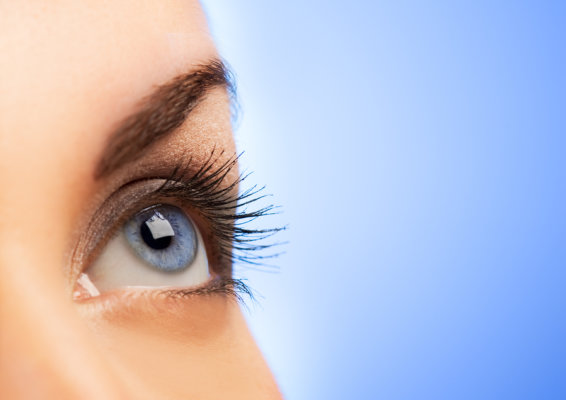Today, the World Health Organization estimates that 75% of blindness is preventable.
Yet the number of people who will experience severe eye diseases leading to blindness- diabetic retinopathy, macular degeneration and glaucoma- continues to rise.
You and I don’t have to be one of the people who suffers from preventable blindness.
By incorporating proactive action steps into the daily life, we can enjoy excellent eyesight to the end of life.
The eyes are the only muscle we have that gets weaker with more use. Some vision loss is normal and hard to prevent. However, severe vision loss leading to blindness does not have to be an outcome for most people living in the United States today if you follow essential actions.
This article will look at how each of us can achieve excellent eyesight for life.
Here is Part 1 of 15 Actions to enjoy good eyesight for life.
1. Keep your appointments with the optometrist.
This is one of the most proactive steps you can take to prevent blindness. Optometrists have diagnostic equipment that can see problems coming “down the pipes” of the eyes before the symptoms ever show.
Optometrists can see if diabetes is causing wear and tear on your retina or whether your eyes are showing signs of developing glaucoma. Once the symptoms of these diseases show up, treatment is limited.
Early detection changes this. Early detection allows doctors to watch, treat and prevent potential eye problems from developing into severe problems.
For people under forty, the American Optometry Association recommends a checkup every three years. People over 40 should see their optometrist every two years unless recommended otherwise by their doctor.
2. Eat fruits and vegetables – lots of ‘em.
Logically we know we need to eat more fruits and vegetables but we don’t do it.
It cannot be overemphasized that the benefit of a diet high in vegetables and fruits on our health is astonishing.
The more colorful the fruit or vegetable, the better it is for your eyes! Red and yellow peppers, carrots, pumpkin, spinach and berries are full of antioxidants and nutrients that will help you feel better and see better.
3. Avoid tired looking eyes by adding the right eye-friendly supplements. (And enjoy healthier eyes too!)
What you eat may help your eyes perk up in their appearance. Foods rich in lutein and zeaxanthin have been shown to boost eye health by strengthening the retina. Look for green leafy vegetables; they are naturally high in lutein and zeaxanthin.
4. Know the signs of unhealthy eyes!
When something is not normal, such as a discoloration of the eye, check in with the optometrist. For example, yellow eyes are not normal. If you or a loved one has yellow-colored eyes, you need to see your optometrist or doctor right away. The body usually gives us clues when something goes awry- when the “whites” of the eyes change to a yellow, it signals a potential problem that needs to be addressed.
5. Indulge in unusual vegetables.
Did you know that kale is noted as a great vegetable for vision health? Not only is it high in antioxidants (like its chard, spinach and beet green family members mentioned in the diet section), but it has one of the most concentrated amounts of vitamin A. Just one cup of kale yields an entire day’s worth of needed Vitamin A (481mcg). That is TWICE as vitamin A than other leafy greens, leading to kale being noted as the eye’s favorite vegetable.
6. Don’t ignore unusual vision changes.
Vision changes need to be followed up with your optometrist. Don’t brush off signs or appearances that seem out of place. Your body is trying to tell you something is not right.
7. Are your eyes twitching?
Get rid of twitching eyes! Bothered by painless, but annoying, twitching of one or both eyes? You may need to check your sleep routine or caffeine intake. Too much caffeine, too little sleep or too much stress can cause involuntary twitching in the eyes. If the twitching increases, be sure to see your optometrist- occasionally twitching can be the sign of a more significant problem- dry eyes, pink eye or blepharitis- that requires additional treatment.
8. Be aware of the detrimental effects of diabetes on the eyes.
Diabetes is potentially dangerous for eye health. Out of control sugar levels wreak havoc on the eyes, leading to diabetic retinopathy.
Diabetic retinopathy is one of the leading causes of blindness in the US today.
And it is preventable.
Be proactive in keeping blood sugars under control, enjoy a healthy diet and maintain a regular relationship with the optometrist to diabetic retinopathy. There is constant research being done to help us understand these diseases better and find cures.
Hope for diabetic eye disease cure may be on its way. The University of Michigan Kellog Eye Center has identified a specific protein that regulates the leaky blood vessels which cause the vision impairment in diabetic eye disease. Researchers believe they have found a way to block the damage done, preventing the vessels from leaking and stopping the vision problems. “We still have a long way to go…but the results are very promising,” one of the lead authors stated.
Melissa AuClair worked as a RN for 8 years in acute care hospitals. The best part of being a nurse is empowering people to care for themselves- and prevent health problems in the future. “It’s so much easier to maintain good health than reverse lifestyle health problems. It takes discipline, but that discipline gives people freedom to live high quality, active lives.” Melissa can be followed on Twitter @Melissauclair She blogs about lifestyle and freelance work at www.launchyourcreativelife.com
Share this content:








